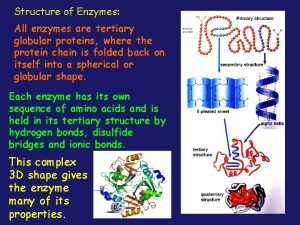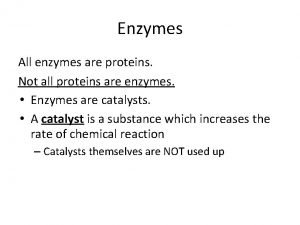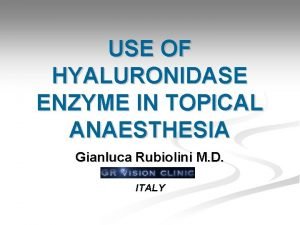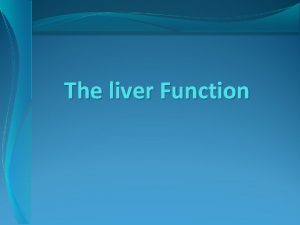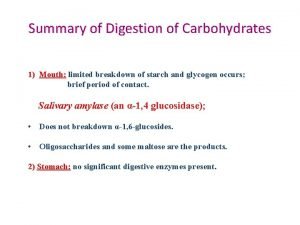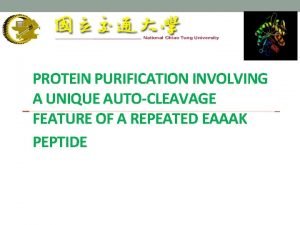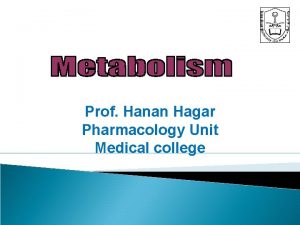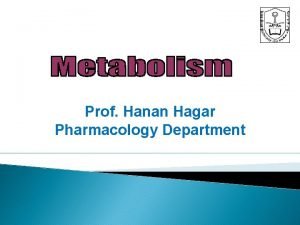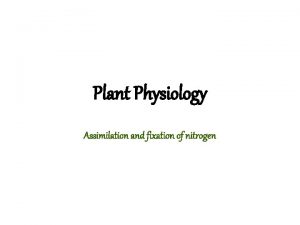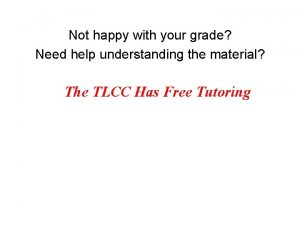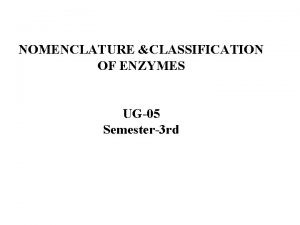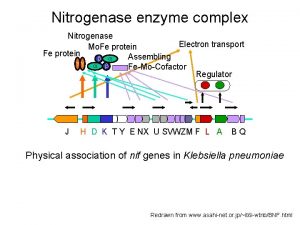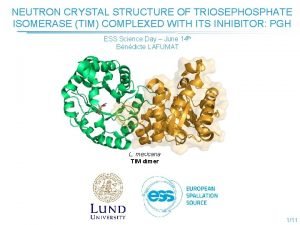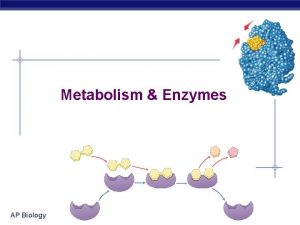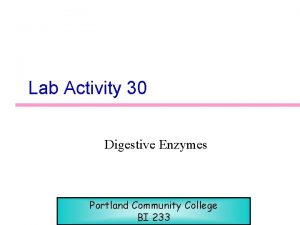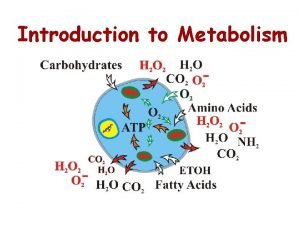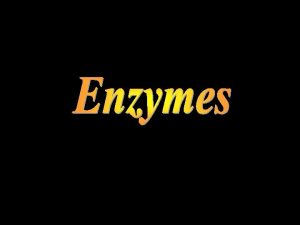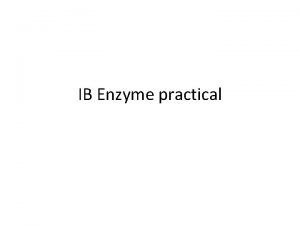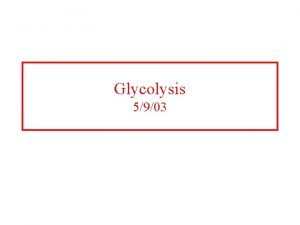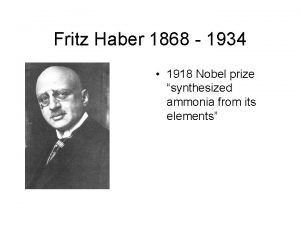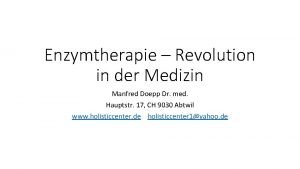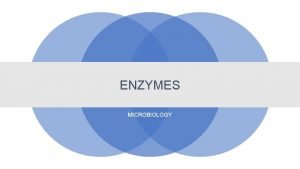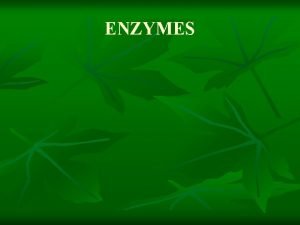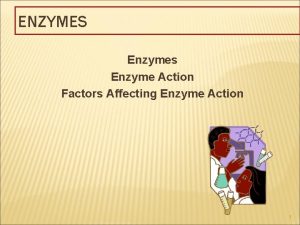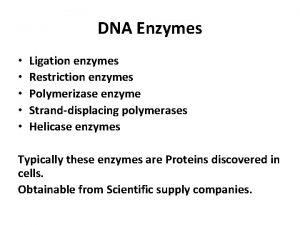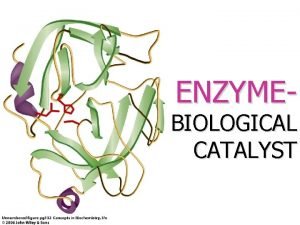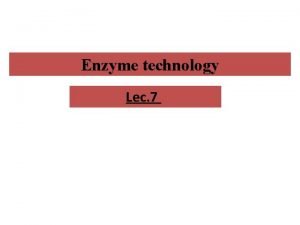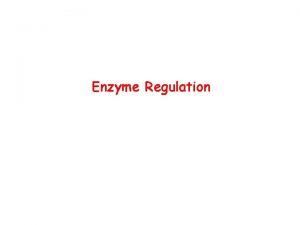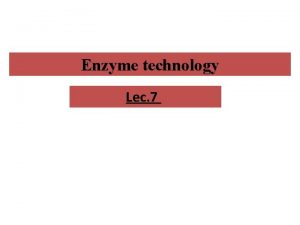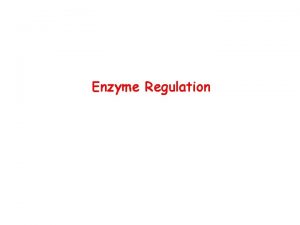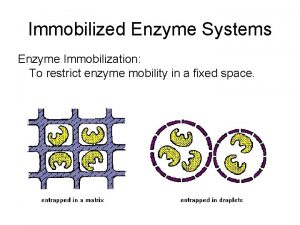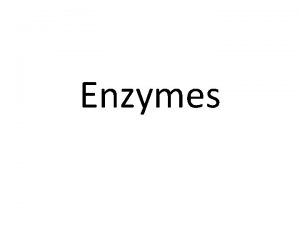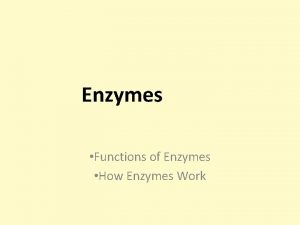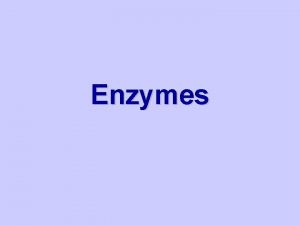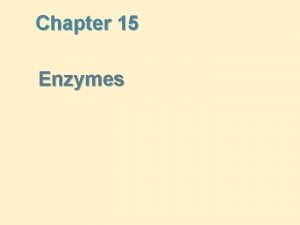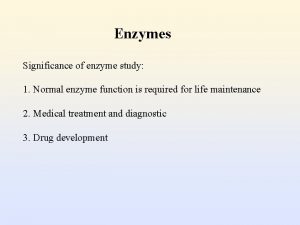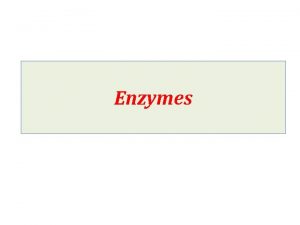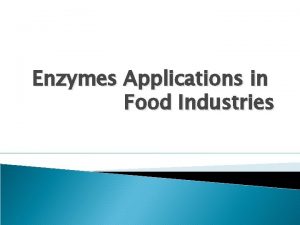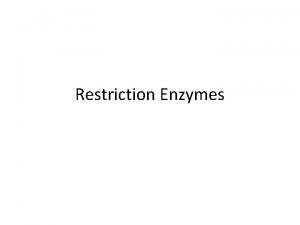2 5 Enzymes Enzyme Composition All enzymes are























- Slides: 23

2. 5 Enzymes

Enzyme Composition • All enzymes are made of protein. • Remember that proteins are made of amino acids.

Chemical reactions need energy to get started. Ex: A fire needs a match to get it started.

Activation energy: the energy needed to START a chemical reaction. ACTIVATION ENERGY REACTANTS PRODUCTS

Activation energy is like pushing a rock up a hill.

Activation energy for a chemical reaction to start often comes from applying heat, but…

• …the chemical reaction may still occur very slowly. • To speed things up, a catalyst can be added.

An enzyme is a type of catalyst, which does two things: 1) reduces the energy needed for a chemical reaction and 2) increases the rate of the reaction (speeds it up).

The specific reactants the enzyme works on are called substrates and bind to them at a place called the active site.

Substrates bind to enzymes at specific places called active sites.

An exothermic chemical reaction releases energy in the form of heat. An endothermic reaction absorbs energy in the form of heat. Exo= outside Endo= inside Therm= temperature; heat

Just like a key can only open a specific lock, and enzyme can only work on a specific substrate. Form = Function

We know when talking about proteins (and enzymes since they are made of proteins) that form=function. • The process of changing/destroying the shape of a protein/enzyme is called denaturing. • Two factors that cause this are p. H and temperature

Denaturing changes the shape of the active site so the enzyme cannot bind to the substrate

1 Substrates bind to the enzyme’s active site.

2 The enzyme weakens bonds in the substrate.

3 A new product is formed. The enzyme is free to catalyze other reactions.

ENZYME SUBSTRATE ENZYME-SUBSTRATE COMPLEX ENZYME Unchanged & Reusable PRODUCTS


Effect of temperature on enzyme activity

Effect of p. H on enzyme activity


 Antigentest åre
Antigentest åre Name a point that is collinear with the given points
Name a point that is collinear with the given points All enzymes are globular proteins
All enzymes are globular proteins Not all enzymes are proteins
Not all enzymes are proteins Hyaluronidase enzyme
Hyaluronidase enzyme Function of liver
Function of liver Enzyme carbohydrate
Enzyme carbohydrate Enzyme purification
Enzyme purification Drug metabolism definition
Drug metabolism definition Enzyme inducer drugs
Enzyme inducer drugs Nitrogenase enzyme complex
Nitrogenase enzyme complex Enzyme cooperativity
Enzyme cooperativity Enzyme ec number
Enzyme ec number Nitrogenase enzyme complex
Nitrogenase enzyme complex Lauege
Lauege Enzymes ap bio
Enzymes ap bio Digestive enzymes
Digestive enzymes Introduction to metabolism
Introduction to metabolism Enzyme classes
Enzyme classes Factors affecting enzyme activity bbc bitesize
Factors affecting enzyme activity bbc bitesize Glucose + atp
Glucose + atp Nitrogenase enzyme complex
Nitrogenase enzyme complex Enzyme in der medizin
Enzyme in der medizin Types of enzyme inhibition
Types of enzyme inhibition


